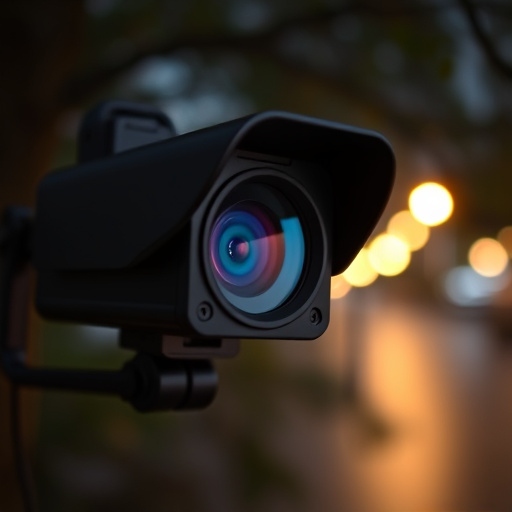Wireless spy cameras, disguised as everyday objects, transmit data via RF signals that can be detected using specialized equipment. Scanning for unusual signals on Wi-Fi or Bluetooth bands is crucial to locate these devices, especially those with cloud storage capabilities. Cloud storage security is critical for protecting sensitive data from covert surveillance; implement encryption, strong passwords, and regular firmware updates. Security professionals use advanced tools and multi-layered approaches to audit file access and identify unusual activities, fortifying privacy defenses against wireless spy cameras and trackers.
Uncover the world of surveillance device detection with our comprehensive guide. In an era where privacy is paramount, understanding wireless spy camera signals is crucial for home and business security. Learn how to identify and locate these devices using advanced techniques, focusing on electromagnetic signal detection. We explore cloud storage security tips to protect your data from prying eyes. Discover expert advice for enhancing surveillance device detection, ensuring peace of mind in today’s digital landscape.
- Understanding Electromagnetic Signals from Wireless Spy Cameras
- Locating Devices: Techniques for Signal Detection
- Cloud Storage Security: Protecting Your Data
- Advanced Tips: Enhancing Surveillance Device Detection
Understanding Electromagnetic Signals from Wireless Spy Cameras
Wireless spy cameras, often hidden in plain sight, transmit data through electromagnetic signals. Understanding these signals is crucial for detecting and identifying covert surveillance devices. These signals can be picked up using specialized equipment designed to capture radio frequency (RF) emissions. Since many modern spy cams store footage in cloud storage, analyzing the signal patterns can help pinpoint the location of the device and even uncover its data transfer methods.
By studying the electromagnetic spectrum, users can identify unusual signals that may indicate the presence of a wireless spy camera. This process involves using tools to scan for specific frequencies used by these devices, which often operate on bands commonly associated with Wi-Fi or Bluetooth technology. Detecting these signals is a critical first step in ensuring privacy and security against such hidden surveillance methods.
Locating Devices: Techniques for Signal Detection
When it comes to locating wireless spy cameras and detecting their electromagnetic signals, professionals employ a range of techniques. One common method is to use signal detectors designed to pick up radio frequency (RF) emissions. These devices can help identify hidden cameras, especially those with cloud storage capabilities, by scanning for unique RF signatures. By analyzing the patterns and strengths of signals, experts can pinpoint the exact location of the surveillance device.
Additionally, using direction-finding techniques, which involve specialized antennas to narrow down the source of a signal, is an effective way to locate spy cameras. This approach is particularly useful in dense urban areas with many potential signal interference sources. Combining these methods allows for a thorough search and ensures that even the most subtle wireless signals from hidden devices are detected, providing a comprehensive solution for privacy protection.
Cloud Storage Security: Protecting Your Data
When it comes to surveillance device electromagnetic signal detection, cloud storage security is a critical aspect that often goes overlooked. As more and more wireless spy cameras are used for monitoring purposes, ensuring the safety of recorded data becomes paramount. Cloud storage services provide a convenient way to store and access video footage remotely, but they also pose potential risks if not secured properly.
To safeguard your sensitive information, it’s essential to employ encryption methods and strong passwords for cloud accounts. Additionally, enabling two-factor authentication adds an extra layer of protection. Regularly updating firmware on surveillance devices and cloud storage platforms is another vital step in preventing unauthorized access. Remember that maintaining security isn’t just about locking down data; it’s about ensuring the integrity and privacy of your recorded evidence.
Advanced Tips: Enhancing Surveillance Device Detection
In the realm of surveillance device detection, staying ahead of the curve requires advanced techniques. One powerful tip is to employ specialized detectors designed to identify electromagnetic signals, which are often used by hidden wireless spy cameras and tracking devices. These tools can analyze radio frequency (RF) patterns, helping users locate and neutralize covert recording devices that might be hiding in plain sight.
Additionally, leveraging cloud storage analysis can significantly enhance detection efforts. By regularly auditing file access and changes in cloud-stored data, security professionals can spot unusual activities indicative of surveillance device usage. This approach, combined with physical searches and electromagnetic signal scanning, creates a multi-layered defense against hidden cameras and trackers, ensuring enhanced privacy protection.
In conclusion, detecting wireless spy cameras and securing cloud storage are vital aspects of modern surveillance awareness. By understanding electromagnetic signals and employing advanced location techniques, individuals can stay ahead of potential privacy breaches. Staying informed about these tips allows for a proactive approach to protecting personal data in an increasingly digital world, ensuring peace of mind and a safer online environment.
